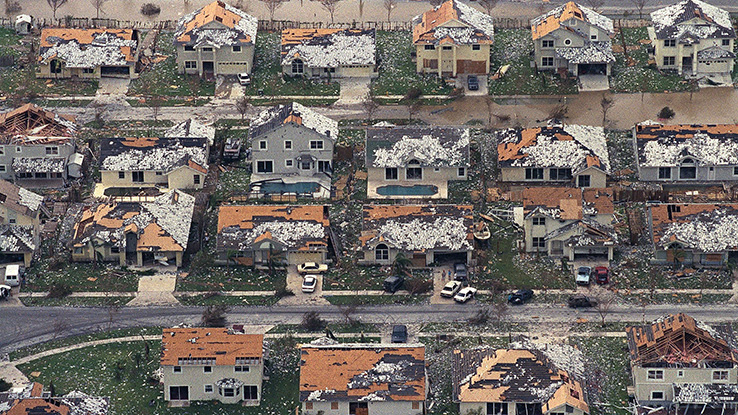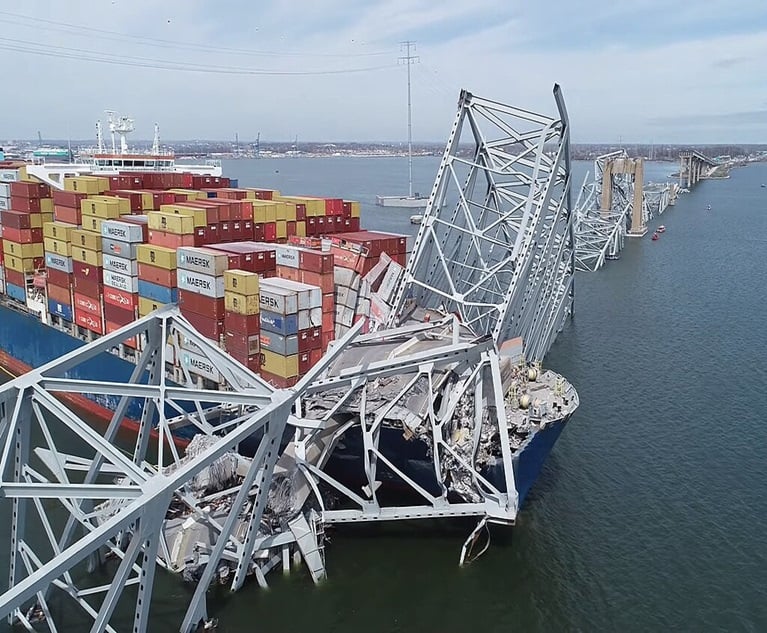Twenty-five years ago, Hurricane Andrew left such a violent impact on South Florida that the World Meteorological Organization retired the name so that no other hurricane will ever be named Andrew. One of only three hurricanes to be at Category 5 intensity upon its landfall in the U.S., Hurricane Andrew upended home, businesses and lives in the Miami suburbs. Because of Andrew, building codes and hurricane risk management changed dramatically.
Related: Are insurers prepared for Hurricane Andrew II?
A new report from Swiss Re titled “Hurricane Andrew: The 20 miles that saved Miami” postulates what the insured losses would be if a storm like Hurricane Andrew were to barrel through South Florida in 2017. Following an identical track and the same intensity as Andrew, a storm of that magnitude today would increase the insured losses from Andrew between $50 billion and $60 billion.
Hard hit
Hurricane Andrew caused $26.5 billion in economic damage (per 1992 USD). The storm destroyed more than 25,000 homes and damaged an additional 100,000. Roughly 60% of the storm's economic damage ($15.5 billion) was borne by the insurance industry.
Related: Atlantic may spawn as many as 19 storms as El Nino odds fade
Is South Florida really ready for another Andrew? The area has transformed quite a bit since it was pummeled by Andrew. Migration to the area has quickened and the population of Miami-Dade County has increased nearly 35% since 1992, and condominium construction along the coast seems never-ending. Combined residential values in Miami-Dade, Broward and Palm Beach Counties are around $660 billion, and commercial values are around $550 billion. More people and more structures can result in more losses for the insurance industry in the event of another similar storm.
Related: South Florida homeowners insured by Citizens Property face 10% increase
After Andrew, South Florida took significant measures to address its vulnerability. In December 1992, the Federal Emergency Management Agency (FEMA) released a detailed report on building performance during the storm. Based on the successes and failures outlined in the report, FEMA developed concrete recommendations to mitigate future hurricane damages, including stronger building materials, workmanship standards, and building-code compliance.
Related: How the insurance industry prepares for hurricanes
As a result of the new FEMA guidelines, Miami-Dade, Monroe and Broward Counties now maintain the country's highest wind standards when it comes to building codes. But are these changes in enough? Twenty-five years later, Swiss Re's report examines if South Florida is ready for another Hurricane Andrew.

Rows of damaged houses sit between Homestead and Florida City, Florida on Aug. 25, 1992. (AP Photo/Mark Foley, File)
CAT modeling for today's 'Andrew'
To calculate how Andrew's footprint would translate into 2017 metrics, Swiss Re used its tropical cyclone model, which contains ever historical event in the National Oceanic and Atmospheric Administration's HURDAT database between 1891 and 2008, along with 199 probabilistic tropical cyclones for each historical tropical cyclone, resulting in more than 220,000 realizations of Atlantic tropical cyclones. Swiss Re's market portfolio is a representation of all insured property values (residential, commercial and automotive), along with coverage terms.

A couple in Homestead, Florida on Aug. 25, 1992 after Hurricane Andrew destroyed their home and ruined most of their personal possessions. (AP Photo/Kathy Willens)
Insured losses
According to Swiss Re, if Andrew were to barrel through South Florida in 2017, taking an identical track and at the same intensity, the insured losses alone would increase to between $50 billion and $60 billion, due to a combination of increased development and asset values.
Want to continue reading?
Become a Free PropertyCasualty360 Digital Reader
Your access to unlimited PropertyCasualty360 content isn’t changing.
Once you are an ALM digital member, you’ll receive:
- All PropertyCasualty360.com news coverage, best practices, and in-depth analysis.
- Educational webcasts, resources from industry leaders, and informative newsletters.
- Other award-winning websites including BenefitsPRO.com and ThinkAdvisor.com.
Already have an account? Sign In
© 2024 ALM Global, LLC, All Rights Reserved. Request academic re-use from www.copyright.com. All other uses, submit a request to [email protected]. For more information visit Asset & Logo Licensing.








